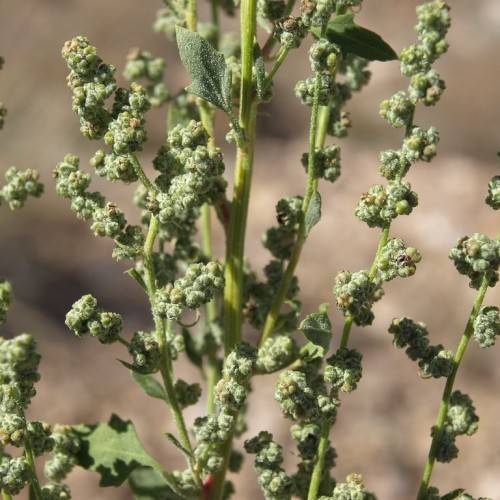
Fogg's Goosefoot
Chenopodium foggii
Watering:
Minimal
Hardiness Zone:
Sun:
full sun,part shade
Leaf:
Yes
Growth Rate:
Low
Drought Tolerant:
Yes
Salt Tolerant:
Yes
Invasive:
Yes
Care Level:
Medium
watering
The Narrow Leaved Goosefoot (Chenopodium desiccatum) needs moderate amounts of watering throughout the growing season. Water the plant deeply a few times a week, making sure that each application of water penetrates deeply into the soil. The soil should be kept slightly moist to the touch at all times, but never soggy. During dry periods, increase the frequency of watering to keep the plant hydrated. During the cooler months of the year, reduce the frequency of watering to once a week.
sunlight
Narrow Leaved Goosefoot (Chenopodium desiccatum) is a plant species that prefers full to partial sun. It prefers 6 or more hours of direct sunlight (or 14+ hours of indirect light) on a daily basis. In areas of the southern US where temperatures are generally higher, it is best to provide partial shade during the afternoon to help prevent overheating. The direct sun also helps it to thrive, producing more flowers and fruits than in shadier locations.
pruning
Narrow Leaved Goosefoot (Chenopodium desiccatum) should be pruned once a year, in early spring before the plant starts to bloom. Pruning can be done lightly; simply remove any dead or diseased stems and faded flowers. If your plant is becoming overgrown, you can do a more extensive pruning, but take care not to remove too much at once. Also, take care not to prune the stems too short, as this can leave them vulnerable to breaking in windy conditions.
